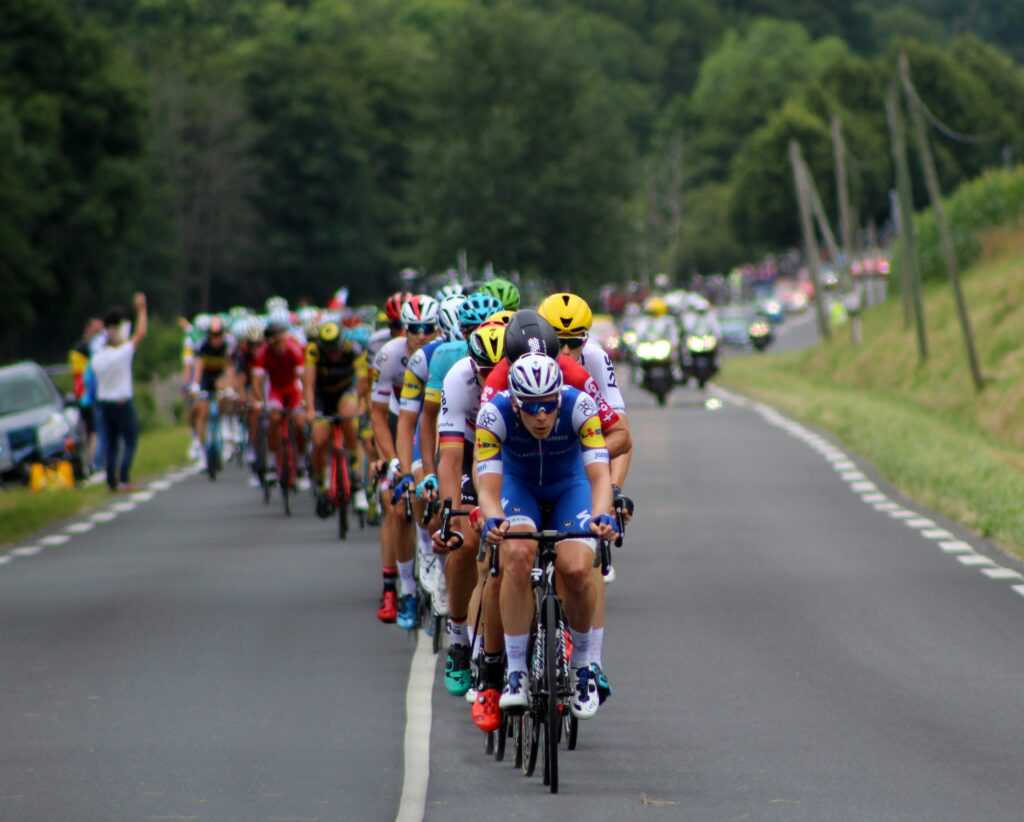Smarter, Faster, and More Connected Bikes
The future of cycling is intelligent, adaptive, and fully integrated. As we enter 2026, innovations in connectivity and machine learning are transforming how bikes perform, respond, and even protect their riders.
Seamless Tech Integration
Modern bikes now come equipped with a suite of technologies once reserved for high end racing or concept models.
Onboard sensors collect real time data on speed, cadence, terrain, and rider output.
GPS navigation systems offer turn by turn guidance and smart rerouting without external devices.
AI enabled systems interpret sensor input and adapt bike behavior mid ride, syncing with mobile platforms for data tracking and feedback.
Adaptive Ride Optimization
Cyclists no longer need to manually adjust settings for different riding conditions. Smart systems now personalize performance dynamically.
Auto tuning of suspension, power delivery, and gearing based on terrain profile.
Custom rider profiles allow different users to experience tailored responsiveness on the same bike.
Whether you’re climbing a steep trail or racing on flat tarmac, your bike adapts in real time boosting performance and safety.
Advanced E Bike Intelligence
Electric bikes are embracing smarter power management and refined control systems.
Enhanced battery efficiency means longer range with less weight.
Torque calibration algorithms adjust motor output according to cadence and terrain.
Self learning power modes offer personalized boosts based on riding history.
These systems help extend battery life and create a more natural, rider responsive feel.
Real Time Telemetry and Crash Detection
Cycle safety tech is moving beyond passive protection. Bikes now act as proactive safety tools.
Telemetry tracking provides detailed ride data, useful for performance feedback and maintenance diagnostics.
Crash detection systems use accelerometers and gyroscopes to recognize collisions, alert emergency contacts automatically, and provide location data in seconds.
In 2026, the smart bike isn’t just a machine it’s a companion that adapts, optimizes, and protects in real time.
Lightweight Materials Go Mainstream
In 2026, frame materials are finally catching up with the hype. Carbon hybrids and advanced thermoplastics aren’t just for elite riders anymore they’re rolling into mainstream production. These materials slash weight without killing durability, opening up performance gains for weekend warriors and committed commuters alike.
It’s not just about going faster. Reduced fatigue, better handling, and higher responsiveness all come baked in. Stronger components are also hitting the shelves at friendlier price points, thanks in part to smarter manufacturing and wider adoption. Whether you ride for sport, speed, or sanity, chances are your gear will weigh less and last longer.
What’s maybe even more important: materials that are built with sustainability in mind. Recyclable carbon fiber and more efficient production methods are on the rise. Brands are figuring out how to combine earth conscious design with real world toughness and rideability. It’s a win for both performance and the planet.
Want to see how we got here? Check out breakthrough bike tech.
Revolution in Wearables and Rider Data

Wearables have moved way past the wrist. 2026 is all about smarter gear that does more than track you get real time guidance straight to your senses. Helmets now come with heads up displays that show turn signals, speed, and even fatigue metrics based on posture and muscle response. It’s like having a coach in your periphery.
Smart eyewear is getting sharper too. Cyclists can now view live ride stats and route changes directly in their line of sight. No more glancing down at a bike computer you stay focused, you stay safer. These glasses adjust based on changing terrain and even offer prompts for hydration or energy refueling based on your metrics.
The data game has also leveled up. Heart rate, wattage output, hydration levels it’s all tracked, sent to your phone, and cross referenced with your performance history. The tech isn’t just collecting data; it’s giving riders grounded, timely advice mid ride. That means fewer crashes, smarter pacing, and better recovery. For pros and weekend warriors alike, the gear is finally catching up to ambition.
Shifting Gears on Drivetrain Tech
Wireless shifting isn’t just a race day luxury anymore it’s becoming a baseline. By 2026, fully wireless shifting systems with zero perceptible lag are expected to be standard across mid to high end bikes. The big difference? Real reliability. No more ghost shifts, no lag between tap and gear change, no mess of cables to tune or replace.
But smooth gear changes are just the start. New self adjusting drivetrains now auto tune based on terrain and cadence. Climbing? It’ll drop you to an efficient gear without waiting for your legs to beg. Sprint opening up? It’ll adjust on the fly, no overthink required. Downhill terrain? Expect subtle downshifts to hold balance and speed without that awkward chain slack.
The mechanics are also tougher. Fewer dropped chains, smarter clutch systems, calibrated torque under full load it all adds up to cleaner transitions, even when hammering. For weekend warriors and pros alike, the drivetrain is finally catching up with the way people actually ride.
Safety Innovation Steps Up
Cycling has always demanded balance between speed and caution. In 2026, tech is tilting safety into the lead. Brake by wire systems, once experimental, are now proven and finally making their way into consumer models. No cables, no lag. Electronic signals trigger precision braking instantly, even under tough conditions like wet roads or steep descents. It’s the kind of control you feel immediately.
Lighting systems have also leveled up. New smart headlights automatically adjust beam intensity and spread based on traffic flow and weather data. If it’s raining, visibility increases. If oncoming vehicles are detected, glare drops. That means less fiddling, more focus.
But maybe the biggest leap is happening right at your fingertips. Some handlebars now come equipped with integrated collision warning systems. Using radar and close range sensors, these bars can detect approaching vehicles or sudden obstacles and alert the rider with haptic feedback. It’s subtle but effective. A small vibration at the right time can mean the difference between a clean ride and a crash.
Add all this up and it’s clear: safety tech in 2026 isn’t an upgrade. It’s the foundation.
Where Tech Is Taking the Peloton Next
Indoor cycling is no longer just about spinning in front of a static screen. Augmented reality (AR) is reshaping what “connected training” means. Riders can now project immersive road environments onto their walls or into smart goggles complete with shifting light, terrain cues, and live feedback. It feels like you’re racing through Tuscany, not your basement.
But it’s not just scenery. Virtual pacers and real time coaching are leveling up group rides. Whether it’s training for a century or a 30 minute burn, cyclists can now join live or on demand sessions with dynamic pacing and personalized metrics. Algorithms adjust resistance based on your effort, turning solo spin time into a structured workout with group energy.
Behind the scenes, a quiet revolution is brewing. Manufacturers are easing off the proprietary grip. More platforms are moving toward open ecosystems letting riders mix and match bikes, apps, wearables, and coaching services. Less lock in means more choice, better customization, and fewer paywalls between you and a good ride.
To dive deeper into the evolution of performance gear, check out the broader breakdown in breakthrough bike tech.

 I'm Daniel Leverette, and I’m excited to be part of the incredible team at Cycle Smooth Ride Long. Cycling has always been a passion of mine, and now, I get to share that passion with you by bringing expert insights, reviews, and tips to help you elevate your ride.
At Cycle Smooth Ride Long, we believe that every cyclist deserves the best experience, whether you’re hitting the pavement for a casual ride or gearing up for an intense training session. My goal is to ensure that you have the knowledge and tools you need to enjoy every mile, from choosing the right gear to optimizing your nutrition and fitness.
I'm Daniel Leverette, and I’m excited to be part of the incredible team at Cycle Smooth Ride Long. Cycling has always been a passion of mine, and now, I get to share that passion with you by bringing expert insights, reviews, and tips to help you elevate your ride.
At Cycle Smooth Ride Long, we believe that every cyclist deserves the best experience, whether you’re hitting the pavement for a casual ride or gearing up for an intense training session. My goal is to ensure that you have the knowledge and tools you need to enjoy every mile, from choosing the right gear to optimizing your nutrition and fitness.
